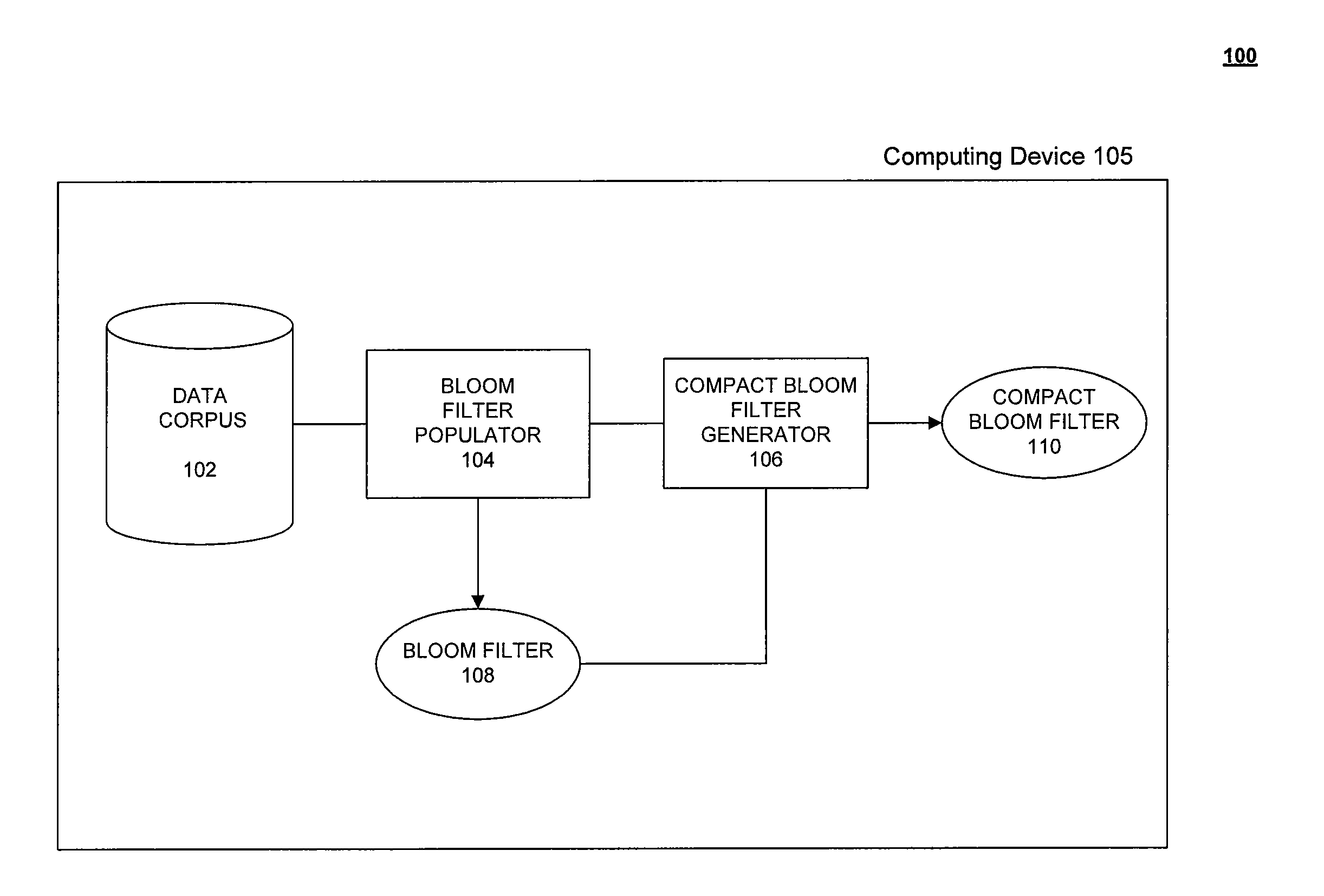Bloom filter compaction
a filter and bloom technology, applied in the field of bloom filters, can solve the problems of small processing time for compression and decompression, and the cost of such a compact representation is small, and achieves the effect of reducing the probability of false positives, reducing the cost of bloom filters, and improving the efficiency of filtering
- Summary
- Abstract
- Description
- Claims
- Application Information
AI Technical Summary
Benefits of technology
Problems solved by technology
Method used
Image
Examples
Embodiment Construction
[0024]Embodiments of the invention relate to systems and methods for compacting Bloom filters. Embodiments of the invention include reading a data corpus, inserting a plurality of data items from the data corpus into a Bloom filter, determining a number of the data items inserted, calculating a desired filter size based on the number, and constructing a compact Bloom filter based on the desired filter size.
[0025]In this way, a compact Bloom filter may be generated without re-reading the data corpus to populate the compact Bloom filter. Thus, the compact Bloom filter is generated in a single pass over the data corpus.
[0026]This detailed description of the embodiments of the present invention is divided into several sections as shown by the following table of contents.
Table of Contents
1. System
2. Exemplary Overall Operation
3. Compact Bloom Filter Generator
4. Example Computer Embodiment
1. System
[0027]This section describes a system for compaction of a Bloom filter according to an embod...
PUM
 Login to View More
Login to View More Abstract
Description
Claims
Application Information
 Login to View More
Login to View More - R&D
- Intellectual Property
- Life Sciences
- Materials
- Tech Scout
- Unparalleled Data Quality
- Higher Quality Content
- 60% Fewer Hallucinations
Browse by: Latest US Patents, China's latest patents, Technical Efficacy Thesaurus, Application Domain, Technology Topic, Popular Technical Reports.
© 2025 PatSnap. All rights reserved.Legal|Privacy policy|Modern Slavery Act Transparency Statement|Sitemap|About US| Contact US: help@patsnap.com



